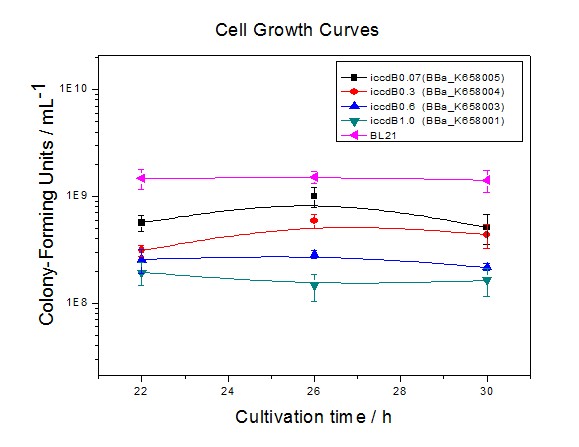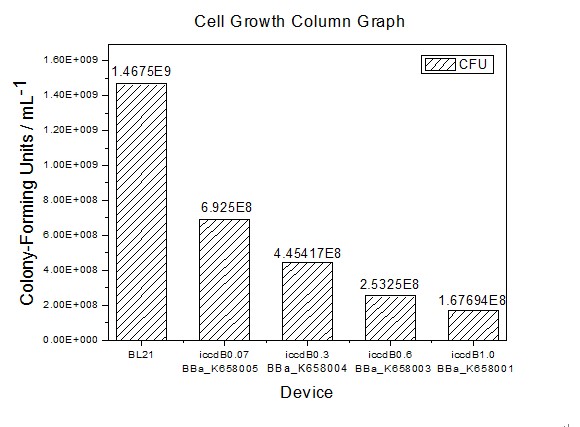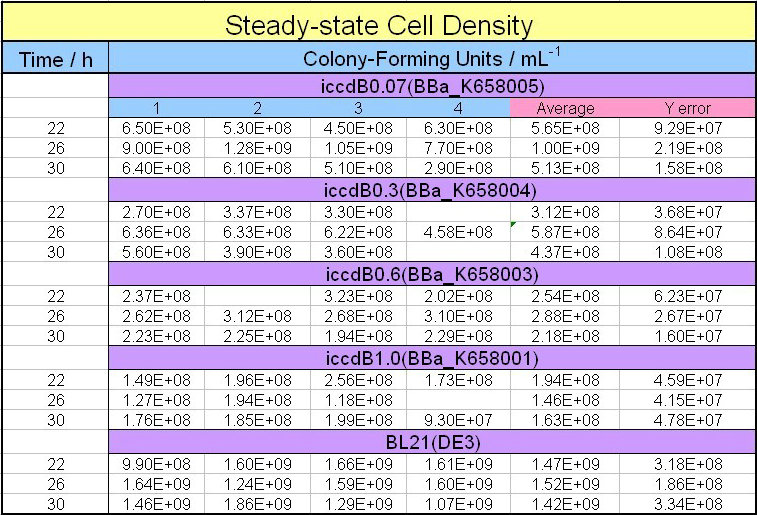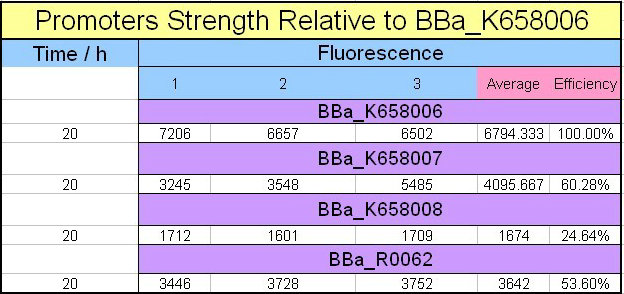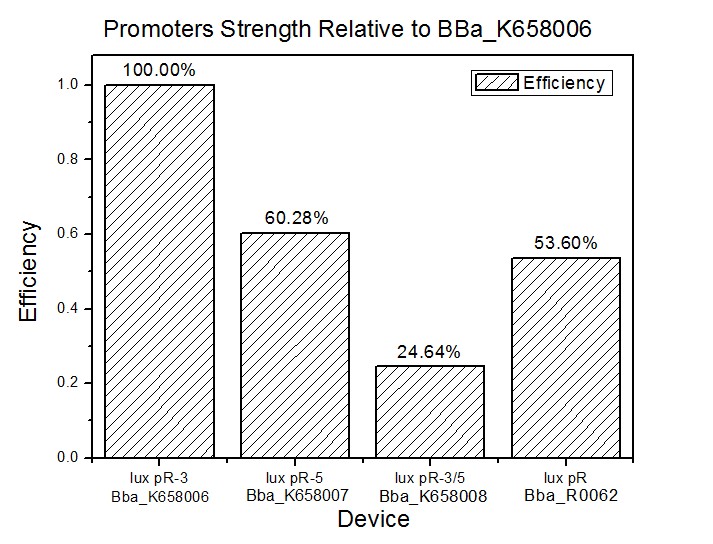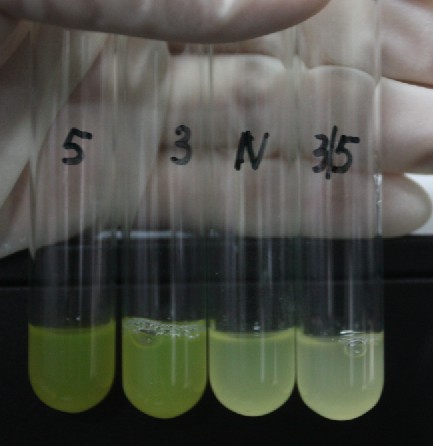Team:XMU-China/Result
From 2011.igem.org
(Difference between revisions)
(→population-control devices with RBS of different strength) |
(→population-control devices with mutation at position 3,5 and 3/5) |
||
| Line 28: | Line 28: | ||
==population-control devices with mutation at position 3,5 and 3/5== | ==population-control devices with mutation at position 3,5 and 3/5== | ||
| - | [[Image: | + | [[Image:XMU_China_117.jpg|left|Figure 4 Experimentally measured steady-state cell density of iccdB0.6(BBa_K658003) and iccdB-3 (BBa_K658009)|frame|Figure 4 Experimentally measured steady-state cell density of iccdB0.6(BBa_K658003) and iccdB-3 (BBa_K658009).]] |
| + | |||
| + | |||
| + | |||
| + | [[Image:XMU_China_118.jpg|left|Figure 5 Average of experimentally measured cell densities of BL21’s cells with iccdB0.6 (BBa_K658003) and its mutant iccdB-3 (BBa_K658009)|frame|Figure 5 Average of experimentally measured cell densities of BL21’s cells with iccdB0.6 (BBa_K658003) and its mutant iccdB-3 (BBa_K658009).]] | ||
<html> | <html> | ||
<img src="http://partsregistry.org/wiki/images/4/41/XMU_China_block.jpg"> | <img src="http://partsregistry.org/wiki/images/4/41/XMU_China_block.jpg"> | ||
| Line 36: | Line 40: | ||
| - | Figure | + | Figure 4 and Figure 5 illustrate that the population-control device iccdB-3 programs a relatively lower steady-state cell density compared with iccdB0.6. This matched the result of the test on four lux pR promoters’ strength in our IR-GFP device (BBa_K658016). The strength of lux pR promoters were defined as follows: |
| - | [[Image: | + | [[Image:XMU_China_119.jpg|left|Figure 6 Efficiency of promoter lux pR (R0062) and its 3 mutants|frame|Figure 6 Efficiency of promoter lux pR (R0062) and its 3 mutants.]] |
<html> | <html> | ||
<img src="http://partsregistry.org/wiki/images/4/41/XMU_China_block.jpg"> | <img src="http://partsregistry.org/wiki/images/4/41/XMU_China_block.jpg"> | ||
| Line 45: | Line 49: | ||
| - | As is shown in figure | + | As is shown in figure 6, promoter lux pR-3 has the highest strength of the four. It is probable that mutation at position 3 lowers the threshold for the binding reaction between LuxR/AHL protein complex and promoter lux pR, which starts the Quorum Sensing system at a relatively earlier period with a lower cell density compared with circuits regulated by wild type promoter lux pR (BBa_R0062). |
Once the QS system is started, downstream killer protein expresses. The viable cell density reaches a steady state when cell growth rate equals to its death rate. Generally, steady-state cell density seems to fluctuate at the cell density when QS is started. Thus, the higher strength a promoter has, the earlier the population-control device is started, leading to a lower steady-state cell density. | Once the QS system is started, downstream killer protein expresses. The viable cell density reaches a steady state when cell growth rate equals to its death rate. Generally, steady-state cell density seems to fluctuate at the cell density when QS is started. Thus, the higher strength a promoter has, the earlier the population-control device is started, leading to a lower steady-state cell density. | ||
Revision as of 23:10, 5 October 2011
 "
"


